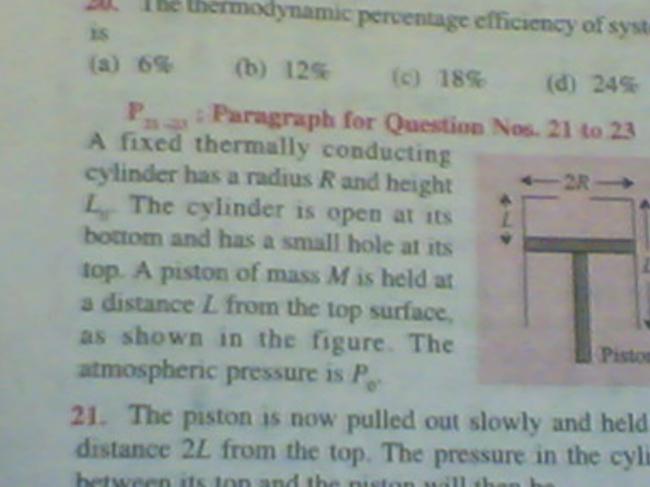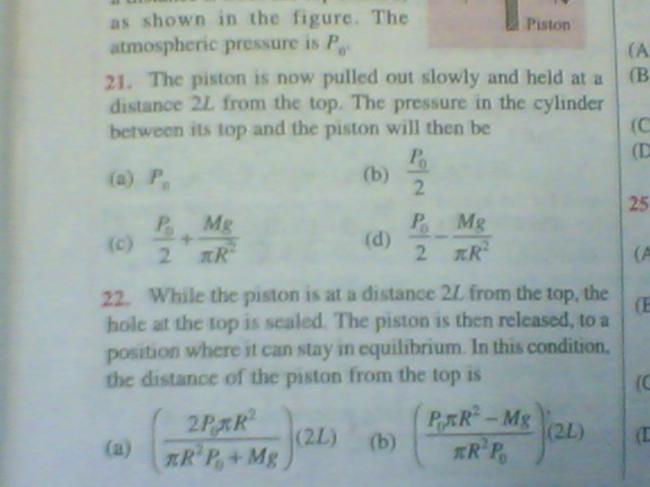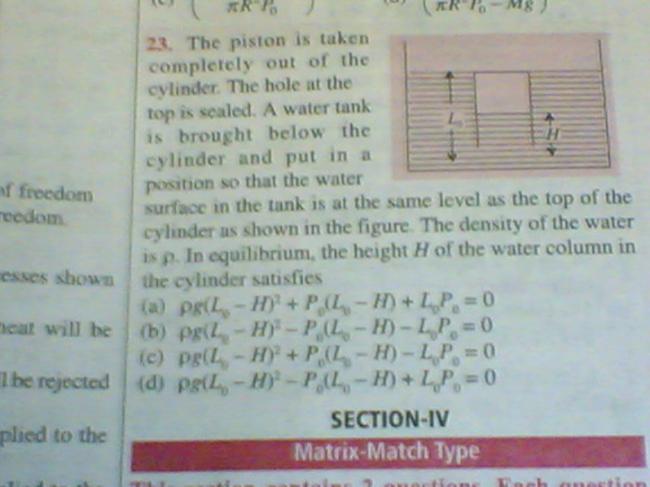first ans .. Po ??
15 Answers
oh sky sorry to say that i have got the answer for the questions just before ten minutes
tx for ur kind reply. tx a lot.
This thread will still be useful for others (like me) who are blank in this lesson. Pls post the solution and the things to remember while doing such questions [4]
sankara remember in questions like the first one u sholud rember the following points,
the work done by the piston is equal to 1]work done against gravity
2] work done against the gas
and in some similar problems u r also given a spring attached. in that case u need to consider even the work doone against spring force.
thats it, calculating these three gives u wat u need.
PL=P'(L-H)
P'=PL/(L-H)
P+ÏgL=PL/(L-H)+ÏgH
P+Ïg(L-H)=PL/(L-H)
P(L-H)+Ïg(L-H)2=PL
Thus, I think C is the correct option :)
The mistake IITimcoming is that the Pressure inside has changed...
You have used the same pressure P.0
see when the cyllinder started from the top of the water surface.. the volume was V and pressure was equal to the atmospheric pressure.
But as you keep pushing it inside.. the volume will decrease and pressure will increase..
so you have to ifnd the new pressure.
That one is PV = constant.
Area is constant .. thus, Length is the main criterion
SO P'(AL')=PAL
extremely sorry people for my late reply.
the ans for the first one is a
the last one is c
the first one's (a) because the top is open to the atmosphere, so regardless of the position of piston, the pressure will always be P0


